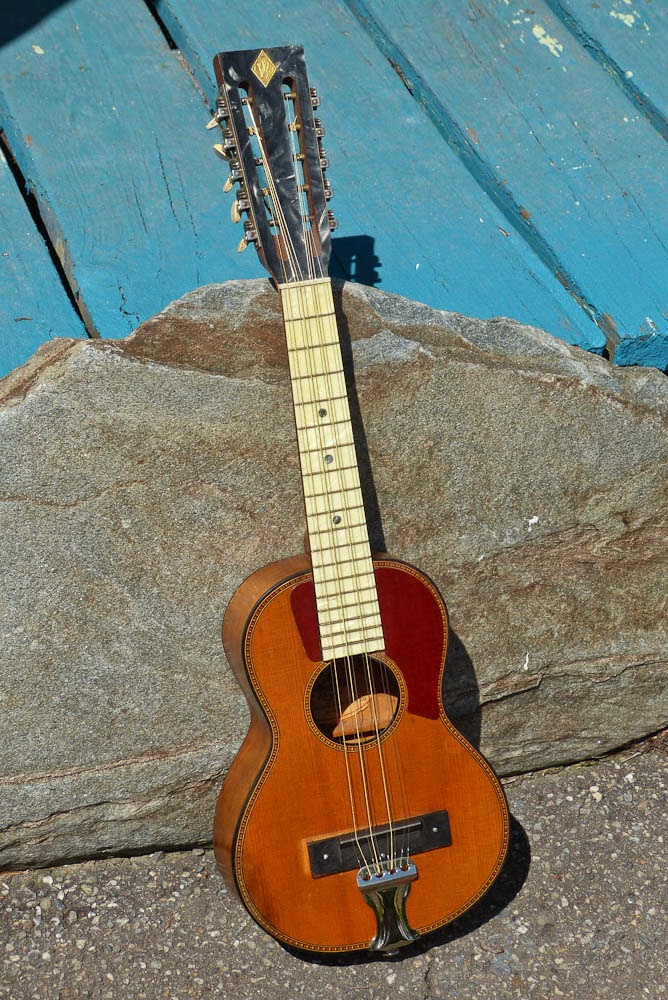c.1930 Regal Spruce/Birch Pearloid-board Tiple
This is the same tiple I converted to a mandola for a customer in 2011 and it was traded in for some recent repair work. I've reconverted it back to a tiple and done some other work needed to spruce it up (glued-up some newly-opened seams, adjusted the bridge, reseated a number of frets, light fret level/dress, new nut, setup) and now it's a happy-go-lucky little pocket 12 string once again.
Let's face it: tiples are cool. They've got the jangle and warmth and when they're strung up with a tailpiece load as on this guy they've got a lot of volume and cut, too. You can't simply "play it like a ukulele" but at least the chord patterns are the same. I attack them the same way I might attack a Portuguese guitar or bouzouki: crosspicking and zingy mid-chord runs sound great. Think about the background stuff you hear in Cuban or Puerto Rican music. This is it.
For those not in the know: a North American tiple is roughly tenor-ukulele in size but sports 10 steel strings in a 2-3-3-2 configuration and has octaves on the bottom 3 courses.
It's got solid spruce over solid birch. One back brace (rear lower) is missing but otherwise this tiple is "mostly there." The bridge is the original but it's been slightly relocated and the tie-block has been removed (as I recall the tie block was damaged to begin with). It's entirely "floating" now though 3 tiny screws hold it in position.
Both the headstock and fretboard got the full celluloid treatment. It's flashy, that's for sure.
Fret work on celluloid-faced boards can be tedious because the frets often need to be pulled and reseated with glue... which is what happened here. The bottom edges of the board often curl up just slightly, too, as the celluloid contracts but the glued top surface pulls the board up from underneath. This has also happened but it doesn't effect playability after all the work (which is spot on at 1/16" at the 12th fret and fast).
I always like Regal's choice of odd purfling. It looks great, here.
The pickguards are not original but they fit the aesthetic.
Here's the funky original bridge with its new, slotted, fret-saddle. The tailpiece is a modern resonator mandolin type and I've simply loaded the ball-end tiple strings from "behind the bend" and caught the ball-ends in the "teeth" of the tailpiece.
There are no cracks on this guy.
The tuners are all good to go but there is one with a small chip out of its button (not pictured, sorry... forgot to snag a pic). It's still clinging to the shaft nicely, though, and doesn't worry me any.
The black celluloid binding is on both the top and back edges.
There's a small amount of binding misalignment just below the tailpiece and in a couple spots on back but that's it.

















Comments